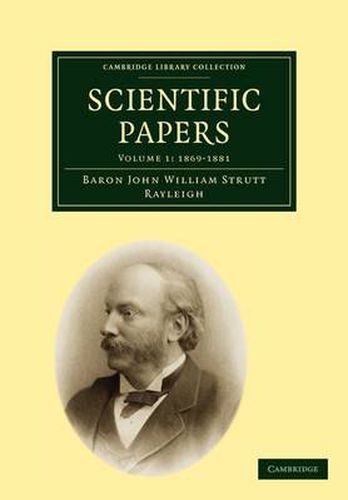Readings Newsletter
Become a Readings Member to make your shopping experience even easier.
Sign in or sign up for free!
You’re not far away from qualifying for FREE standard shipping within Australia
You’ve qualified for FREE standard shipping within Australia
The cart is loading…






Lord Rayleigh (1842-1919) won the Nobel Prize for physics in 1904. His early research was in optics and acoustics but his first published paper, from 1869, was an explanation of Maxwell’s electromagnetic theory. In 1871, he related the degree of light scattering to wavelength (part of the explanation for why the sky is blue), and in 1872 he wrote his classic Theory of Sound (not included here). He became a Fellow of the Royal Society and inherited his father’s peerage in 1873. Rayleigh nevertheless continued groundbreaking research, including the first description of Moire interference (1874). In 1881, while president of the London Mathematical Society (1878-1880) and successor to Maxwell as Cavendish Professor of Experimental Physics at Cambridge (1879-1884), Rayleigh published a paper on diffraction gratings which led to improvements in the spectroscope and future developments in high-resolution spectroscopy. This volume contains papers from 1869 to 1881.
$9.00 standard shipping within Australia
FREE standard shipping within Australia for orders over $100.00
Express & International shipping calculated at checkout
Lord Rayleigh (1842-1919) won the Nobel Prize for physics in 1904. His early research was in optics and acoustics but his first published paper, from 1869, was an explanation of Maxwell’s electromagnetic theory. In 1871, he related the degree of light scattering to wavelength (part of the explanation for why the sky is blue), and in 1872 he wrote his classic Theory of Sound (not included here). He became a Fellow of the Royal Society and inherited his father’s peerage in 1873. Rayleigh nevertheless continued groundbreaking research, including the first description of Moire interference (1874). In 1881, while president of the London Mathematical Society (1878-1880) and successor to Maxwell as Cavendish Professor of Experimental Physics at Cambridge (1879-1884), Rayleigh published a paper on diffraction gratings which led to improvements in the spectroscope and future developments in high-resolution spectroscopy. This volume contains papers from 1869 to 1881.